.png.transform/rendition-xs/image_image%20(1).png)
Dominio de Tares: From The Heart of El Bierzo
Dominio de Tares launched its first wine in the year 2000, with the goal of honoring the local grape varieties of the El Bierzo wine region, specifically red grape Mencía and white grape Godello. 16 years later, and coinciding with the launch of its latest creation made from Godello grapes, I paid a visit to the birthplace of its wines
It's the end of June and Dominio de Tares has extended an invitation to visit this part of the Camino de Santiago, which crosses the valleys of DO Bierzo between vineyards, many of which are dotted with the vines that produce this winery's grapes. Personally, I think this is the best time of year to visit the countryside, and even more so given the landscape here, which floods the valleys and hillsides with the vibrant green of the vineyards in their state of flux, now dotted with bunches of grapes, still ripening on the vine.
The DO Bierzo is located in the province of León, where Galicia, Asturias and the central plains of Castile-León come together. The climate here is humid, but less so than in rainy Galicia; and it is crisp, although still milder, thanks to the fact that it's sheltered from the northern winds by the mountains of León. It can also be somewhat extreme, although not as much as on the harsh plains that extend south, which do share their sun with this region. This area could be considered privileged, taking the best from all the regions that surround it. The climate is technically Atlantic, with hardly any frosts, and with an average rainfall of close to 700 mm and more than 2000 hours of sun a year. The soils here are predominantly slate in higher altitudes (up to 1,000 meters), with some clay, small pebbles, and alluvial in lower areas (450 meters).
It starts in the vineyards
Dominio de Tares' vineyards are located at an average altitude of 600 meters, on hillsides preferably south-facing with slate and gravel terrain. The winery currently has 30 hectares of its own vines, which it has acquired over the years by always seeking out the most interesting vineyards to suit its objective of strengthening local varieties Mencía and Godello, as well as those that match its intentions for these grape varieties. This implies the search for old vine Mencía grapes ¬– the bulk of its production – that can express the variety's most intrinsic traits. Rafael Somonte, the winery's enologist since 2014, defines Mencía as a "thick-skinned variety that lends the wines a deep reddish-purple hue. It is characterized by aromas of red fruit such as currents and cranberries, and the palate at times has hints of green, although grapes in DO Bierzo ripen better than they do in the north and hence the wines have a sweeter palate". He is referring to plants that are between 40 and 90 years old – including some special vines that are 110 – which barely produce some 4,000 kg/ha.
The Godello vines are, however, another story. They were planted in the early days of the winery, are trained off the ground, and are the result of a careful selection of the best soil types for this variety. They are now 16 years old and yield the fruit that is used for the winery's two white wines. The first is the more serious Dominio de Tares Blanco, which is aged for six months in French oak. The second is the excuse that brought us here, the recently unveiled La Sonrisa, a wine that transmits the purest aromas of Godello (citrus, green apple and some notes of stone fruit), with a refreshing acidity and frank and medium finish. It is a young, pleasant wine, although not an easy one to make, according to Rafael, who makes a joke about the wine's name ("the smile"), confirming that "making a quality, young wine is equally or more difficult than making someone smile".
Like a good enologist from the generation that currently dominates the Spanish wine world, he understands that his job is to watch the vineyard and participate as little as possible in the whole process. "The work of the enologist is the selection and division, in reality, almost everything that we eventually see in the wine, starts in the vineyard." The phrase is his own, and he repeats it a number of times while we taste his wines, but I can assure you that I've heard it many times before, and always in wineries whose wines I admire. This is particularly true of the red wines, those old-vine Mencías that are used to make the well-known Dominio de Tares Cepas Viejas, the young Baltos, the extensively aged Bembibre, and the expressive P3. The all share a characteristic intensity, which increases as you go up the line. There is no doubt that all of these wines can stand their own against the powerful gastronomy of the region of El Bierzo.
The wines of Dominio de Tares
Dominio de Tares Cepas Viejas is the winery's flagship wine, and the one for which it is widely known. It is made from vineyards that are more than 60 years old, and it is aged in a mix of French and American oak for approximately nine months. The 2011 vintage, the most recent I've tasted, is notable for its aromas of red fruit, mingled with black pepper and roasted and smoky notes. The alcohol is fairly present, but well-balanced, with lively tannins and marked acidity.
Bembibre is an intense wine that comes from 80-year-old vines. It has been aged for 16 months in French oak and a further 16 months in the bottle. The grapes used for this wine are fermented separately, in an effort to bring out the best of each plot. We try various vintages, all of which share notes of black fruit and spices. The 2006 is particularly spicy, and also notable for its animal notes and hints of cedar, and fairly high alcohol content. For its part, the 2008 is more herbaceous, with aromas of mint, fennel, cedar and minerals (charcoal), and nuances of anise. The level of acidity is moderate, but the alcohol level is still somewhat notable, albeit accompanied by ripe, but marked tannins. Finally, we tried the 2010 vintage, where the red fruit (ripe cherries) and some floral notes (violets), mingle with the same mint and fennel that was apparent in the 2008 vintage. The oak is very present, especially on the palate, although the higher level of acidity combined with the characteristic level of alcohol and tannins makes me think that this wine has a long potential for aging.
The winery's top-tier wine is P3, which hails from a vineyard by the same name. Made with pre-phylloxera vines that are 110 years old, the production is low, yielding approximately 2,000 bottles. The wine is aged in the same way as the Bembibre (16 months in French oak, in this instance, new, and another 16 month bottle aging). We taste the 2008 vintage. It is a very powerful wine, with a complex nose dominated by notes of black fruit (plums, figs), some ripe red fruit, a lot of spices (black pepper, cloves), black licorice and smoky notes, and earthy and toasted nuances. On the palate it is structured and intense, but with an excellent balance between the alcohol and acidity (both of which are high), and it exhibits elegant, sweet tannins.
We finish the visit with an invitation to walk some of the routes that make up the Camino de Santiago. Here, we cross paths with pilgrims from all over the world. Perhaps some of them are from the 25 countries where Dominio de Tares exports 20% of its wines, the principal of which are Canada, followed by Denmark, Switzerland, and the United Kingdom.
It's the end of June and Dominio de Tares has extended an invitation to visit this part of the Camino de Santiago, which crosses the valleys of DO Bierzo between vineyards, many of which are dotted with the vines that produce this winery's grapes
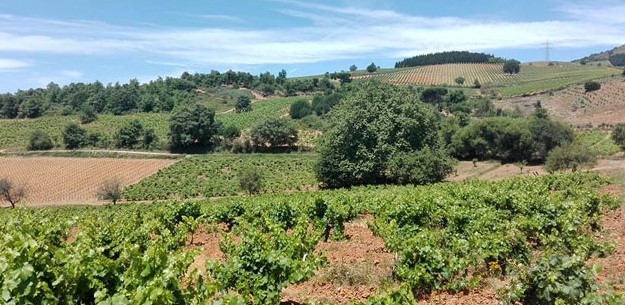
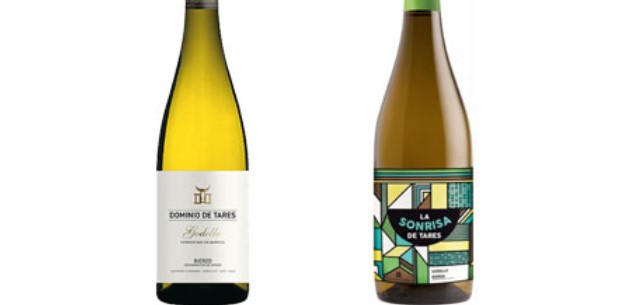
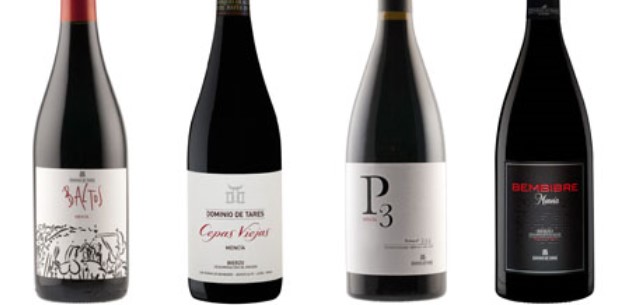
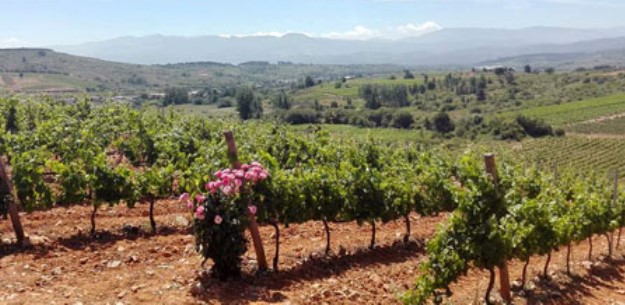
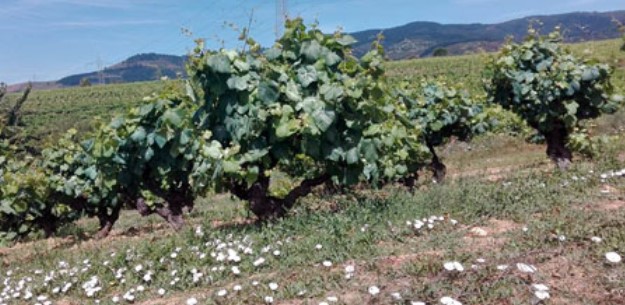
- Image 1
- Image 2
- Image 3
- Image 4
- Image 5


